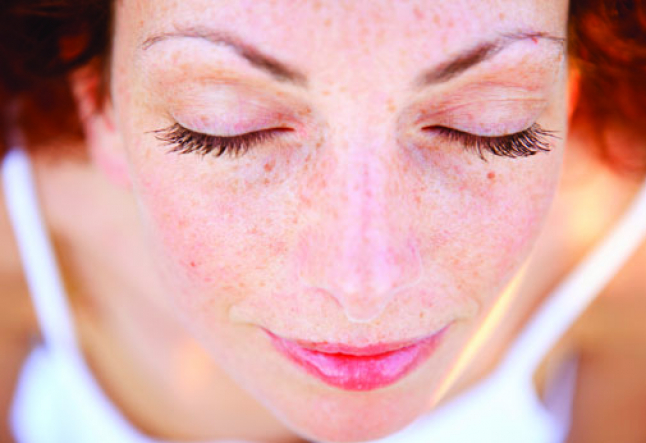breathing

a duel of wills
I recently took a breathing awareness course at my yoga studio. We met once a week for eight weeks. Our weekly homework assignments included a home practice of 20 minutes four times a week consisting of a set of three asanas – two restorative poses that varied from week to week followed by savasana (final resting pose). While in these poses, we were asked to observe our breath. The idea was that through deeper awareness, we could learn to breathe more fully and find relaxation. At the end of each week, we submitted a practice form summarizing our activities and observations.
In the first week, the asanas were a reclining supported backbend, child’s pose and savasana. When I got into the first pose, I noticed that I was holding my breath. Then I exhaled a little and inhaled a little. When I tried to take a deeper breath, I noticed that I had puffed up my chest and sucked in my abdomen. No air was getting into my belly. On the next inhale I tried to relax my belly. Although I felt air getting deeper into my lungs, it didn’t fill my chest as much as I wanted. I also noticed that I did not exhale as deeply as I inhaled. Then a lump in the blanket I was lying on distracted me.
It was digging into my rib cage. I should be more careful when folding my blanket. After awhile, I realized that I had been thinking about what I wanted to eat for breakfast, my last birthday and my eighth-grade science project. During that time, I didn’t know what my breath had been doing. I swore I would do better in my next asana but it was the same story. In savasana, I paid attention to two breaths. Then, I thought about myriad hypothetical situations.
During the following weeks I experimented with bringing my attention to tense body parts as well as focusing on relaxed areas of my body. These exercises were useful but once I was done with them, I was back to directing my breath. When I could watch it, all I could see was what I was doing wrong. My impulse was to try to correct my imperfections but I was failing miserably. All my attempts at deeper breathing were awkward. I felt like I was trying to solve a jigsaw puzzle with oven mitts on. By the fourth week, I was still at square one.
During the fifth week, before class started, my teacher returned the last week’s practice form to me. She told me that she understood my frustration and hoped that I would hang in there. I nodded but I felt noncommittal. My mind was on the pranayama (yogic breathing) course that I wanted to take. How could I take a course on the yogic art of breath control when I didn’t have a clue how to observe my breath? It was very disappointing to realize that I couldn’t.
As the class began, I turned my attention to my teacher. We did some warm-up asanas followed by a restorative pose. Then we discussed the assigned reading as well as any questions and observations on our practice. The discussion was followed by a demonstration of the asanas for that week’s home practice.
The next morning, after I reviewed my notes from class, I began my practice. In the first asana, my breath felt shallow as well as uneven. In the next asana, I could feel myself taking deeper breaths. The muscles around my ribcage were more flexible. In savasana, my mind and body felt quiet. There was movement from my breathing but not much noise. The sensation in my mind and body was much like how I feel several minutes before I fall asleep at night. It was the first time I ever felt the air traveling into and out of my body.
During the next 24 hours, my nose and lungs became heavily congested due to allergies. In the morning, the last thing I wanted was to do my asanas but I did them. There was no need to bring attention to my breath. It was already there. Before long, I sneezed. As I sat up to blow my nose, I realized that a sneeze is a deep inhale followed by a deep if violent exhale. When I got back into the asana, I had little smile on my face. My body knows how to breathe deeply.
In the remaining weeks of the course, my practice continued to challenge me. However, I discovered that I could actually enjoy the sensation of breathing. When I finished the course, I decided to continue my home practice. My breathing is not very different from how it was before.
I’m just more present with the movement of my breath through my body. In savasana, I bring my awareness to my body. My attention naturally moves to my breath. I feel the air entering my nostrils and traveling down my throat. My lungs expand and my diaphragm moves down into my abdomen. Then it ascends and the air begins to rise up my chest and through my throat and finally out of my nostrils. From time to time, my mind wanders off. When I notice this, I bring my attention back to the breath.
Ann Bui lives in the San Francisco Bay Area. She intends one day to do a handstand away from the wall.
Thank you for “doing it” on YogiTimes.com